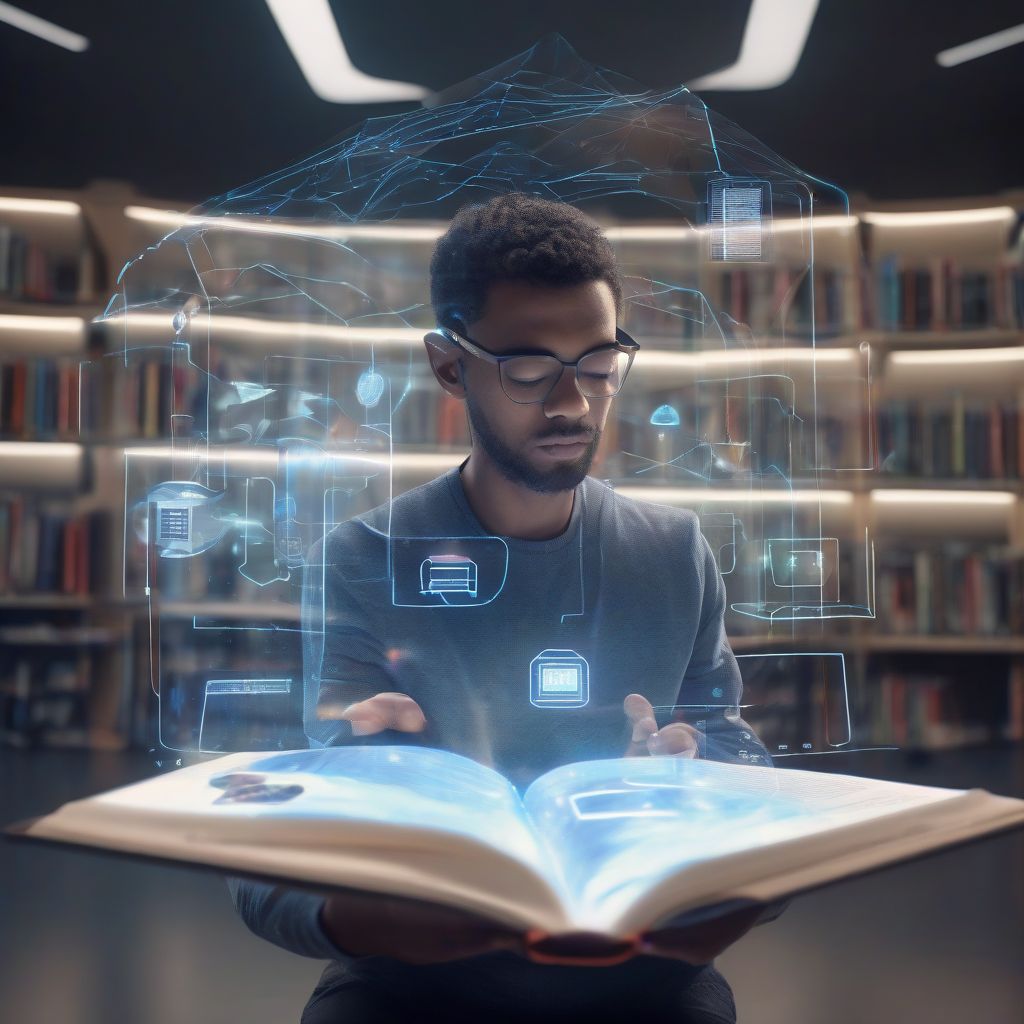Imagine a world where reading isn’t just passive absorption, but an active conversation with the text. Where complex concepts are clarified with a click, historical contexts come alive with interactive maps, and discussions with fellow readers ignite new perspectives. That’s the promise of the future of interactive and digital reading guides, a transformative shift in how we engage with literature and information.
Reimagining Reading in the Digital Age
For centuries, the solitary act of reading has been accompanied by physical companions: dictionaries, encyclopedias, and annotated editions. Now, digital technology is poised to revolutionize this experience, offering a dynamic and personalized approach to understanding text. Interactive and digital reading guides aren’t just static supplements; they’re active learning tools designed to enhance comprehension, spark deeper engagement, and foster a sense of community around the written word.
Personalized Learning Pathways
One of the most exciting prospects of digital reading guides is the potential for personalized learning. Imagine a guide that adapts to your individual reading level, providing targeted explanations and resources based on your comprehension. Struggling with a particular concept? The guide could offer additional resources, like videos or interactive exercises, to help you grasp the material. Already familiar with the historical context? The guide could offer deeper dives into specific aspects, tailoring the experience to your existing knowledge.
Enhanced Comprehension through Multimedia
Digital reading guides aren’t limited to text. They can incorporate a rich array of multimedia elements, transforming the reading experience into a vibrant and engaging journey. Imagine exploring the settings of a novel through interactive maps, visualizing complex scientific concepts through animations, or hearing historical speeches in their original audio format. These elements can deepen comprehension, bring stories to life, and cater to diverse learning styles.
Fostering a Sense of Community
Reading doesn’t have to be a solitary pursuit. Digital reading guides can facilitate online discussions, connecting readers from across the globe. Imagine sharing your interpretations, debating key themes, and exploring different perspectives with fellow readers. This sense of community can enrich the reading experience, fostering a deeper understanding and appreciation for the text.
The Evolution of Educational Resources
Interactive digital reading guides represent a significant leap forward from traditional study aids. Static annotations and supplementary materials are giving way to dynamic and personalized learning experiences. This evolution is fueled by advancements in technology and a growing understanding of how we learn and engage with information. “The ability to interact with the text, to delve deeper into specific areas, and to connect with other readers is transforming the way we learn,” says hypothetical expert Dr. Emily Carter, Professor of Educational Technology at a fictitious University of California, Berkeley.
From Passive Consumption to Active Exploration
Traditional reading guides often encouraged passive consumption of information. Digital guides, on the other hand, empower readers to actively explore the text and its surrounding context. They offer a platform for inquiry and discovery, encouraging readers to ask questions, form their own interpretations, and engage in critical analysis.
Addressing Diverse Learning Styles
Digital reading guides offer a more inclusive approach to learning, catering to a wider range of learning styles. Whether you’re a visual learner who benefits from interactive diagrams or an auditory learner who prefers audio explanations, digital guides can tailor the experience to your individual needs. This personalized approach can enhance comprehension and make learning more accessible for everyone.
The Implications for Education and Beyond
The future of interactive and digital reading guides has far-reaching implications, not just for education, but for how we consume information in general. From academic textbooks to complex legal documents, digital guides can revolutionize the way we understand and interact with text. They can empower individuals to become more informed citizens, critical thinkers, and lifelong learners.
Transforming the Classroom
Imagine a classroom where students engage with historical texts through interactive timelines, explore scientific concepts through virtual simulations, and discuss literary themes in online forums. Digital reading guides have the potential to transform the educational landscape, fostering deeper learning and preparing students for the demands of the 21st century.
Empowering Lifelong Learning
The accessibility and personalized nature of digital reading guides can empower individuals to pursue lifelong learning. Whether you’re exploring a new hobby, delving into a complex topic, or simply seeking to expand your knowledge, digital guides can provide the support and resources you need to succeed.
 The Future of Interactive and Digital Reading Guides
The Future of Interactive and Digital Reading Guides
Conclusion: Embracing the Future of Reading
The future of interactive and digital reading guides is bright, promising a more engaging, personalized, and accessible approach to learning. By embracing these innovative tools, we can unlock the full potential of the written word and cultivate a deeper understanding of the world around us. As we move forward, it’s crucial to continue exploring the possibilities of this technology, ensuring that it serves as a powerful tool for education, personal growth, and intellectual exploration. Share your thoughts on how you envision the future of reading in the comments below! What features would you like to see in interactive reading guides? Let’s discuss!



